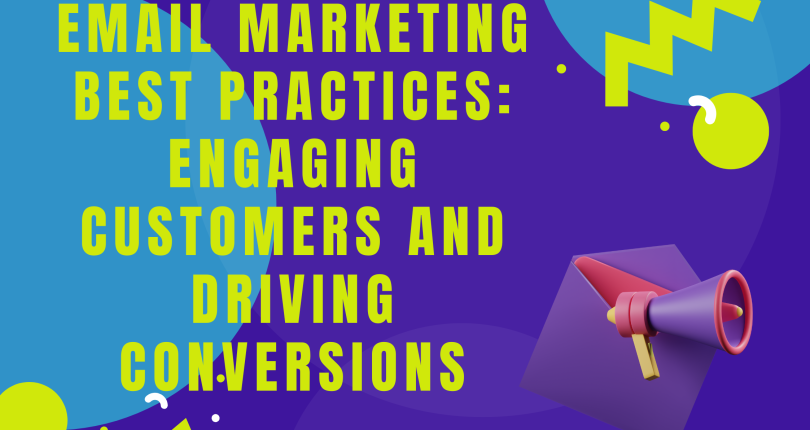Email Marketing Best Practices: Engaging Customers and Driving Conversions

Email marketing continues to be a highly effective and cost-efficient strategy for engaging customers, nurturing relationships, and driving conversions. With the right approach, SMEs can leverage email marketing to build brand loyalty, increase website traffic, and boost sales. In this article, we’ll explore email marketing best practices that will help SMEs create compelling email campaigns that engage their audience and deliver measurable results.
Build a High-Quality Email List:
The foundation of successful email marketing is a high-quality email list. Focus on acquiring permission-based subscribers who are genuinely interested in your brand. Offer valuable incentives such as exclusive content, discounts, or free resources to encourage sign-ups. Regularly clean and segment your email list to ensure you’re targeting the right audience with relevant content.
Craft Compelling Subject Lines:
Subject lines play a crucial role in capturing subscribers’ attention and enticing them to open your emails. Keep subject lines concise, engaging, and personalised. Experiment with different strategies, such as using emojis, posing questions, or creating a sense of urgency. A compelling subject line can significantly impact open rates.
Personalise and Segment Your Emails:
Personalisation is key to driving engagement and conversions. Segment your email list based on demographics, interests, purchase history, or engagement levels. Tailor your email content to each segment, delivering relevant and personalised messages. Use dynamic content to dynamically change sections of your emails based on recipient data.
Create Valuable and Relevant Content:
Deliver valuable content that resonates with your audience. Offer educational resources, industry insights, exclusive offers, or entertaining content. Keep your emails visually appealing, concise, and scannable. Use a mix of text, images, and call-to-action buttons to guide readers towards desired actions.
Optimise for Mobile Devices:
With the majority of emails now being opened on mobile devices, optimising your emails for mobile is crucial. Use responsive email templates that automatically adjust to different screen sizes. Keep your email design simple and easy to navigate on smaller screens. Test your emails across various devices and email clients to ensure a seamless experience for all users.
Implement Clear Call-to-Actions:
Include clear and compelling call-to-action (CTA) buttons in your emails. Use action-oriented language and place CTAs strategically within your email content. Make it easy for subscribers to take the desired action, whether it’s making a purchase, downloading a resource, or visiting your website.
Test and Optimize:
Testing is an essential component of successful email marketing. Experiment with different elements such as subject lines, email content, CTAs, and send times. A/B test your emails to compare different variations and identify what resonates best with your audience. Analyse metrics such as open rates, click-through rates, and conversion rates to optimise your campaigns.
Monitor and Analyse Results:
Regularly monitor and analyse the performance of your email campaigns. Use email marketing analytics tools to track key metrics, such as open rates, click-through rates, and conversions. Gain insights into subscriber behaviour and preferences. Make data-driven decisions to refine your email marketing strategy and improve results over time.
Conclusion:
Email marketing remains a powerful tool for engaging customers and driving conversions for SMEs. By building a high-quality email list, crafting compelling subject lines, personalising and segmenting emails, creating valuable content, optimising for mobile, implementing clear CTAs, testing and optimising, and monitoring results, SMEs can harness the full potential of email marketing. Remember, building strong relationships with your subscribers through relevant and valuable content is the key to long-term success.




